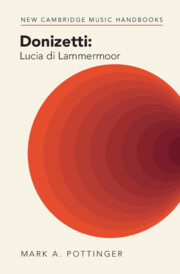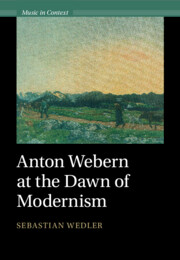Refine search
Actions for selected content:
274 results

New Religious Movements and the Romantic Spirit of Modernity
-
- Published online:
- 16 December 2025
- Print publication:
- 22 January 2026
-
- Element
-
- You have access
- HTML
- Export citation

Wales, Romanticism, and the Making of Imperial Culture
-
- Published online:
- 12 December 2025
- Print publication:
- 22 January 2026
2 - British Speculations on Terra Australis and Romantic-Period Poetry
-
-
- Book:
- The Cambridge History of Australian Poetry
- Published online:
- 19 November 2025
- Print publication:
- 11 December 2025, pp 47-62
-
- Chapter
- Export citation
9 - Gothic Plots and the Nineteenth-Century Irish Novel
- from Part II - Entanglements of Prose, Poetry, and Empire: 1800–1900
-
-
- Book:
- The Cambridge Companion to British Literature and Empire
- Published online:
- 20 November 2025
- Print publication:
- 04 December 2025, pp 136-148
-
- Chapter
- Export citation

Irish Romanticism
- A Literary History
-
- Published online:
- 27 November 2025
- Print publication:
- 11 December 2025

Donizetti: Lucia di Lammermoor
-
- Published online:
- 06 November 2025
- Print publication:
- 23 October 2025
2 - Dialogue and Play in the Nonet
-
- Book:
- Louise Farrenc: Nonet for Winds and Strings
- Published online:
- 23 October 2025
- Print publication:
- 23 October 2025, pp 58-117
-
- Chapter
- Export citation
8 - South Sea Romanticism and the Emergence of Frontier Tycoons
-
- Book:
- The Kuroshio Frontier
- Published online:
- 11 October 2025
- Print publication:
- 23 October 2025, pp 218-237
-
- Chapter
-
- You have access
- Open access
- HTML
- Export citation
Introduction to the Life and Career of Louise Farrenc
-
- Book:
- Louise Farrenc: Nonet for Winds and Strings
- Published online:
- 23 October 2025
- Print publication:
- 23 October 2025, pp 1-22
-
- Chapter
- Export citation
Chapter 19 - Romanticism and the Sublime
- from Part III - In the Name of Time
-
-
- Book:
- Michael Field in Context
- Published online:
- 03 October 2025
- Print publication:
- 25 September 2025, pp 172-180
-
- Chapter
- Export citation
1 - Prelude: Earliness as a Historiographical Category
-
- Book:
- Anton Webern at the Dawn of Modernism
- Published online:
- 21 August 2025
- Print publication:
- 04 September 2025, pp 11-25
-
- Chapter
- Export citation

Anton Webern at the Dawn of Modernism
-
- Published online:
- 21 August 2025
- Print publication:
- 04 September 2025
Chapter 3 - Receptions of Leibniz
-
- Book:
- Freedom and Perfection
- Published online:
- 25 July 2025
- Print publication:
- 14 August 2025, pp 58-82
-
- Chapter
- Export citation
6 - Folklore and Fantasy
-
- Book:
- Silence of the Gods
- Published online:
- 19 June 2025
- Print publication:
- 19 June 2025, pp 331-366
-
- Chapter
- Export citation
Chapter 18 - Imaginary Space
- from Part III - Applications and Extensions
-
-
- Book:
- Space and Literary Studies
- Published online:
- 07 May 2025
- Print publication:
- 22 May 2025, pp 303-318
-
- Chapter
- Export citation
Chapter 30 - Drama
- from Part III - Writings
-
-
- Book:
- Percy Shelley in Context
- Published online:
- 17 April 2025
- Print publication:
- 24 April 2025, pp 228-234
-
- Chapter
- Export citation
Chapter 7 - Ancient Philosophy
- from Part II - Intellectual, Cultural, and Political Contexts
-
-
- Book:
- Percy Shelley in Context
- Published online:
- 17 April 2025
- Print publication:
- 24 April 2025, pp 51-58
-
- Chapter
- Export citation
Chapter 5 - Literary Plants
- from Part I - Historical Periods
-
-
- Book:
- The Cambridge Handbook of Literature and Plants
- Published online:
- 06 February 2025
- Print publication:
- 13 February 2025, pp 90-108
-
- Chapter
- Export citation
Chapter 8 - Legend
-
- Book:
- The Cambridge Introduction to Samuel Johnson
- Published online:
- 07 February 2025
- Print publication:
- 13 February 2025, pp 132-149
-
- Chapter
- Export citation
Conclusion
-
- Book:
- Robert Wedderburn, Abolition, and the Commons
- Published online:
- 09 January 2025
- Print publication:
- 23 January 2025, pp 135-139
-
- Chapter
- Export citation
